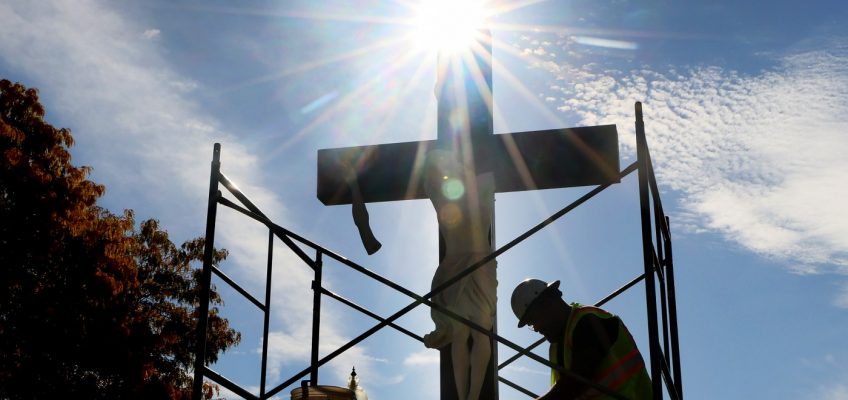JERUSALEM — Many years ago, when I first started covering the Israeli-Palestinian conflict, I got to know a gifted Palestinian journalist who, for reasons that will become apparent in a moment, I’ll refer to only by his first name, Said.
As with many other Palestinian journalists, Said’s primary source of income was working with foreign reporters as a “fixer,” someone who could arrange difficult meetings, translate from Arabic, show you around. Said had an independent streak, and he was no fan of Yasser Arafat, which made him particularly helpful in cutting through the Palestinian Authority’s propagandistic bombast.
With Said, I interviewed senior Hamas leaders in the Gaza Strip; and in the West Bank, officials in Ramallah, retired terrorists in Nablus, political dissidents in Jenin and construction workers in Hebron. We developed a friendship. Then, shortly after 9/11, he called me in a panic because something I had written in The Wall Street Journal had met with the displeasure of officials in the Palestinian Authority. The goon squad, he said, had paid his family an admonitory visit in their apartment, and he wanted me to take the story down. That was out of the question, I told him. It was never safe for us to work together again.
I mention this anecdote in the wake of last week’s sensational story that an Israeli airstrike had killed some 500 people at a Gaza hospital — a story variously attributed to “Palestinian officials,” “the Gazan health ministry” and “health authorities in the besieged enclave.” The story sparked violent protests throughout the Middle East.
It has since become clear that nearly every element of that story is, to put it gently, highly dubious.
A missile did not hit the hospital but rather the parking lot next to it. Abundant evidence, confirmed by U.S. intelligence and independent analyses, indicates that the explosion was caused by a missile fired from Gaza, which was intended to kill Israelis but malfunctioned and fell to Earth. There is no solid reason to believe the death toll reached anywhere near 500. And the “Gazan health ministry” is not some sort of apolitical body but a Hamas-owned entity, towing and promoting whatever the terrorist organization demands.
I’ll leave the media criticism to others. But Western audiences will never grasp the nature of the current conflict until they internalize one central fact.
In Israel, as in every other democracy, political and military officials sometimes lie — but journalists hold them to account, tell the stories they want to tell, and don’t live in fear of midnight knocks on the door. The Palestinian territories, by contrast, are republics of fear — fear of the Palestinian Authority in the West Bank and of Hamas in Gaza. Palestinians are neither more nor less honest than people elsewhere. But, as in any tyrannical or fanatical regime, those who stray from the approved line put themselves at serious risk.
This is a truth that only rarely slips out — but when it does, it’s revealing.
During the first major Israel-Hamas war, in 2008 and 2009, Palestinian groups claimed the death toll was mostly civilian, with roughly 1,400 people killed. But a Palestinian doctor working in Gaza’s Shifa hospital told a different story. “The number of deceased stands at no more than 500 to 600,” he said. “Most of them are youths between the ages of 17 to 23 who were recruited to the ranks of Hamas, who sent them to the slaughter,” he said. Tellingly, according to the Israeli news site YNet, “the doctor wished to remain unidentified, out of fear for his life.”
Or take the case of Hani al-Agha, a Palestinian journalist who was jailed for weeks and tortured by Hamas in 2019. In that case, the Palestinian Journalists Syndicate took the extraordinary step of condemning al-Agha’s arrest and torture as “an attempt to intimidate journalists in Gaza Strip, who are subject to repressive police authority.” Yet, outside of a few news releases, the story received almost no coverage in the wider media.
Human rights organizations occasionally take a break from their incessant criticism of Israel to pay attention to this kind of atrocious repression. But only rarely do Western audiences understand the full extent to which information emerging from Gaza is suspect — at least until it has been extensively and independently corroborated by journalists who aren’t living in fear of Hamas and don’t need to protect someone who is. Readers who wouldn’t normally be inclined to believe man-in-the-street interviews in, say, Pyongyang, North Korea, or regime pronouncements coming out of the Kremlin, should be equally skeptical about the phrase “Palestinian officials say.”
The news media still needs fixers and freelancers to tell the full story in war zones. But people consuming that media should know the threats, pressures and cultures that these journalists operate in — not because we necessarily distrust them individually, but because we appreciate the dangerous circumstances in which they find themselves.
The next time there’s a story about an alleged Israeli atrocity in Gaza, readers deserve to know how the information was acquired and from whom. It’s bad enough that Hamas tyrannizes Palestinians and terrorizes Israelis. We don’t need it misinforming the rest of us.
Bret Stephens writes a column for the New York Times.




